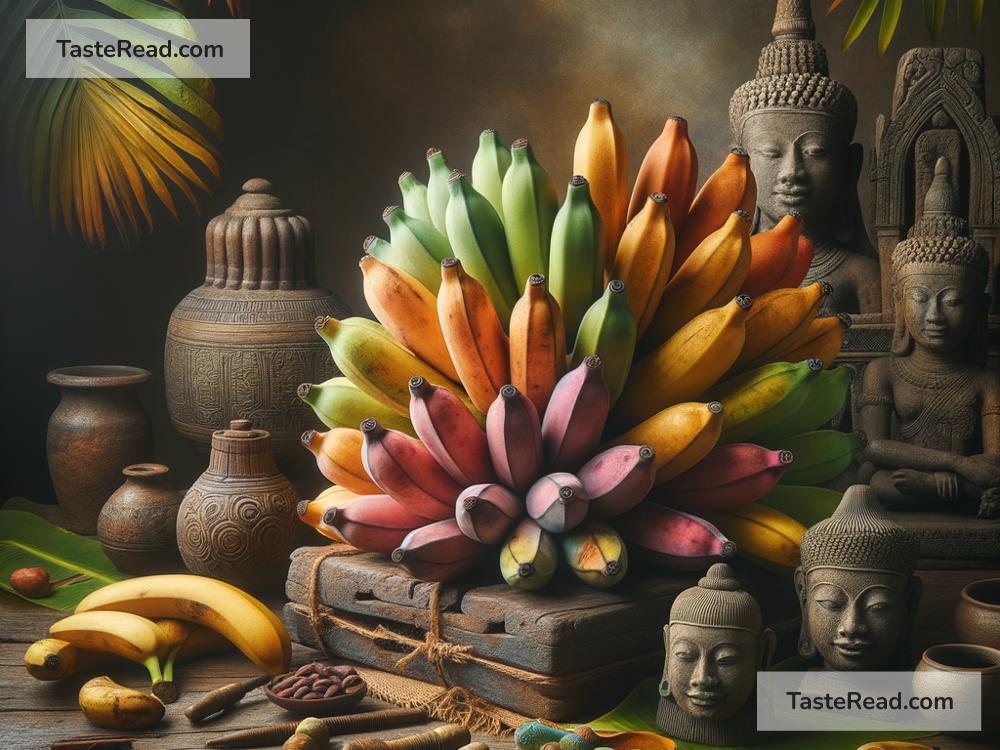The Curious Story of Bananas and Their Ancient Origins
You probably eat bananas all the time. They’re sweet, easy to peel, and packed with nutrients. But have you ever stopped to wonder where bananas come from? Bananas might seem like a modern fruit we grab off supermarket shelves, but their story goes back thousands of years. It’s a story full of science, farming, and even mystery. Let’s explore the fascinating journey of the banana from its ancient origins to the fruit bowl in your kitchen.
Where Did Bananas Begin?
Bananas didn’t just appear out of nowhere. They trace their origins to Southeast Asia, in regions such as modern-day Malaysia, Indonesia, and the Philippines. People there began to cultivate bananas thousands of years ago, perhaps as far back as 5,000 BCE. Wild bananas looked very different from the ones we enjoy today. They were small, packed with hard seeds, and not as sweet. Ancient farmers noticed that some banana plants produced fruit with fewer seeds and softer flesh, so they started planting those varieties selectively to improve the crop over time.
The banana we know today is a product of this human effort. It’s actually a hybrid—scientists believe it originated from two kinds of wild bananas, Musa acuminata and Musa balbisiana. By combining traits of these plants, early humans unintentionally created sweeter, seedless bananas that became the foundation for modern varieties.
Spreading Around the World
Bananas didn’t stay in Southeast Asia for long. As people traded goods and migrated to new lands, they carried banana plants with them. By about 2,000 BCE, bananas had reached India, and they quickly spread to Africa through trade routes. Africans loved bananas so much that they started growing them in large quantities, and the banana became an important part of African diets.
Later, Arab traders helped spread bananas even farther. They brought the fruit to the Middle East and introduced it to Europe during the Islamic Golden Age. Europeans were amazed by this exotic fruit, but they didn’t grow it there because bananas need warm, tropical climates to thrive.
The next big leap for bananas came in the 15th and 16th centuries, when European explorers and colonizers carried banana plants to the Americas. Bananas flourished in Central and South America, thanks to the warm temperatures and fertile soil. By the 19th century, bananas were being grown in huge plantations and exported across the world.
The Banana Boom
In the late 1800s, bananas exploded in popularity. They were cheap, easy to transport, and delicious—a perfect treat for people living in industrialized cities. Companies like the United Fruit Company and Chiquita created massive banana plantations in Latin America to meet the growing demand. Bananas quickly became one of the world’s favorite fruits.
But there was a downside to this success. Banana companies often mistreated local workers and disrupted the environments where bananas were grown. Some countries in Central America were even nicknamed “banana republics” because the fruit companies had so much power over their governments. To this day, the banana trade has a complicated history involving labor rights and environmental concerns.
The Modern Banana Crisis
Bananas may seem like the perfect fruit, but they face a big problem: almost all commercial bananas are genetically identical. Most of the bananas we eat today are a variety called “Cavendish,” and they’re clones of each other. This makes Cavendish bananas easy to grow and ship, but it also makes them highly vulnerable to diseases.
In the mid-20th century, another type of banana called Gros Michel was almost wiped out by Panama disease, a fungus that devastated banana farms. Farmers replaced Gros Michel with Cavendish bananas because they were resistant to that fungus. But now a new strain of Panama disease threatens the Cavendish banana, and scientists worry it could disappear if they don’t find a solution.
Will Bananas Disappear?
Don’t panic—bananas aren’t gone yet! Scientists and farmers are working hard to protect banana crops. They’re experimenting with breeding new varieties that are resistant to diseases and exploring innovative farming methods. There’s also hope that genetic technology could help save bananas by introducing disease-resistant traits or improving their diversity.
Still, the banana’s future is uncertain, and it reminds us of how fragile our food system can be. The story of bananas shows why it’s important to protect crops, preserve biodiversity, and treat our planet wisely.
Fun Facts You (Probably) Didn’t Know!
- Bananas are technically berries! Science defines berries as fruits that grow from a single flower with one ovary, and bananas fit that description.
- Bananas float in water because they’re filled with air!
- There are over 1,000 types of bananas in the world, but most of us only eat the Cavendish variety.
- Bananas are one of the first fruits ever grown by humans—a truly ancient treat!
A Fruit Full of History
Bananas may seem simple, but they’re anything but ordinary. Their journey spans thousands of years, crossing continents and cultures. Today, they’re one of the most widely eaten fruits in the world. So, the next time you peel a banana, take a moment to appreciate its rich history and the ancient origins that brought it onto your plate.
Who knew bananas could have such a curious story?


